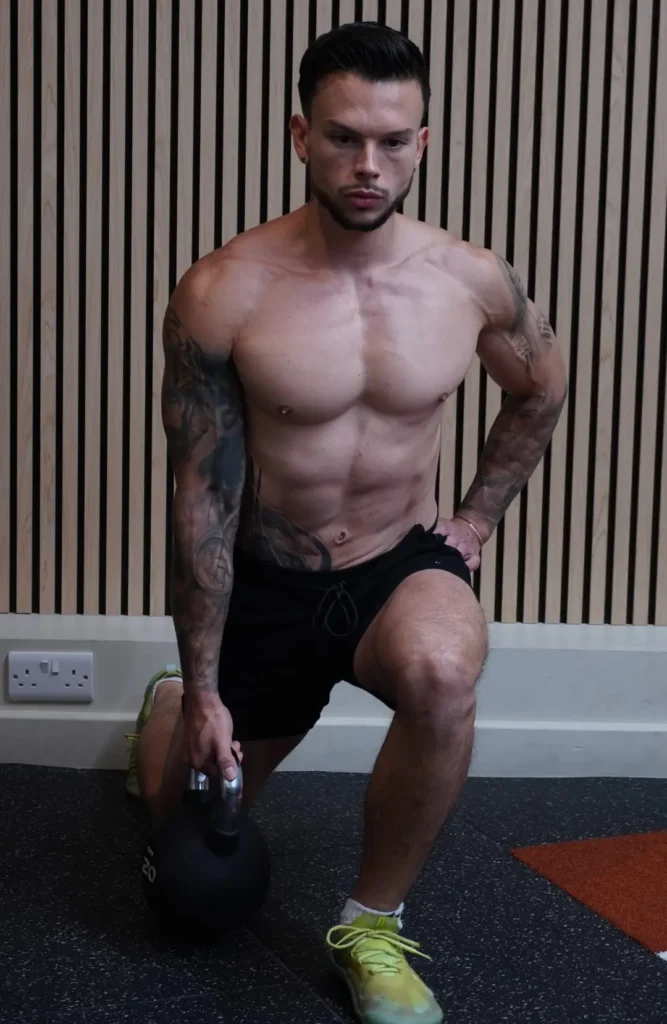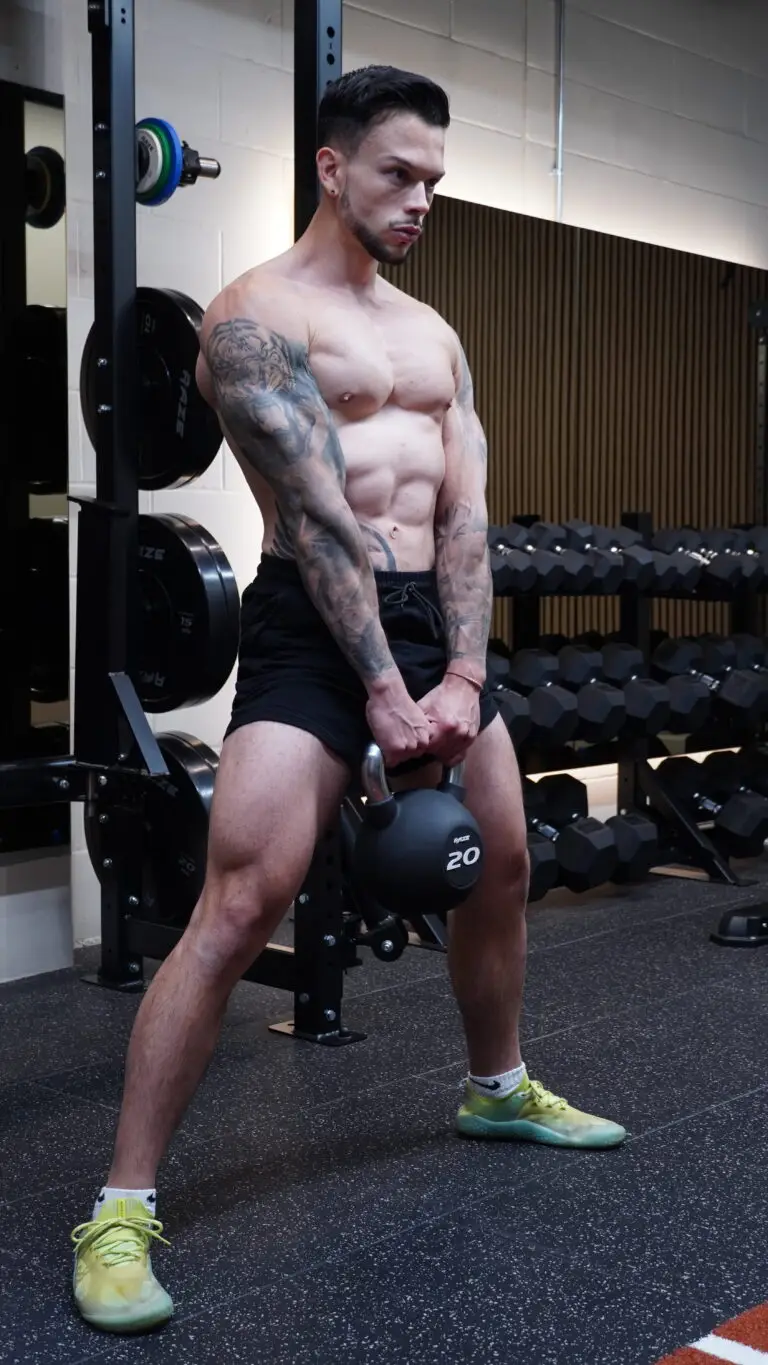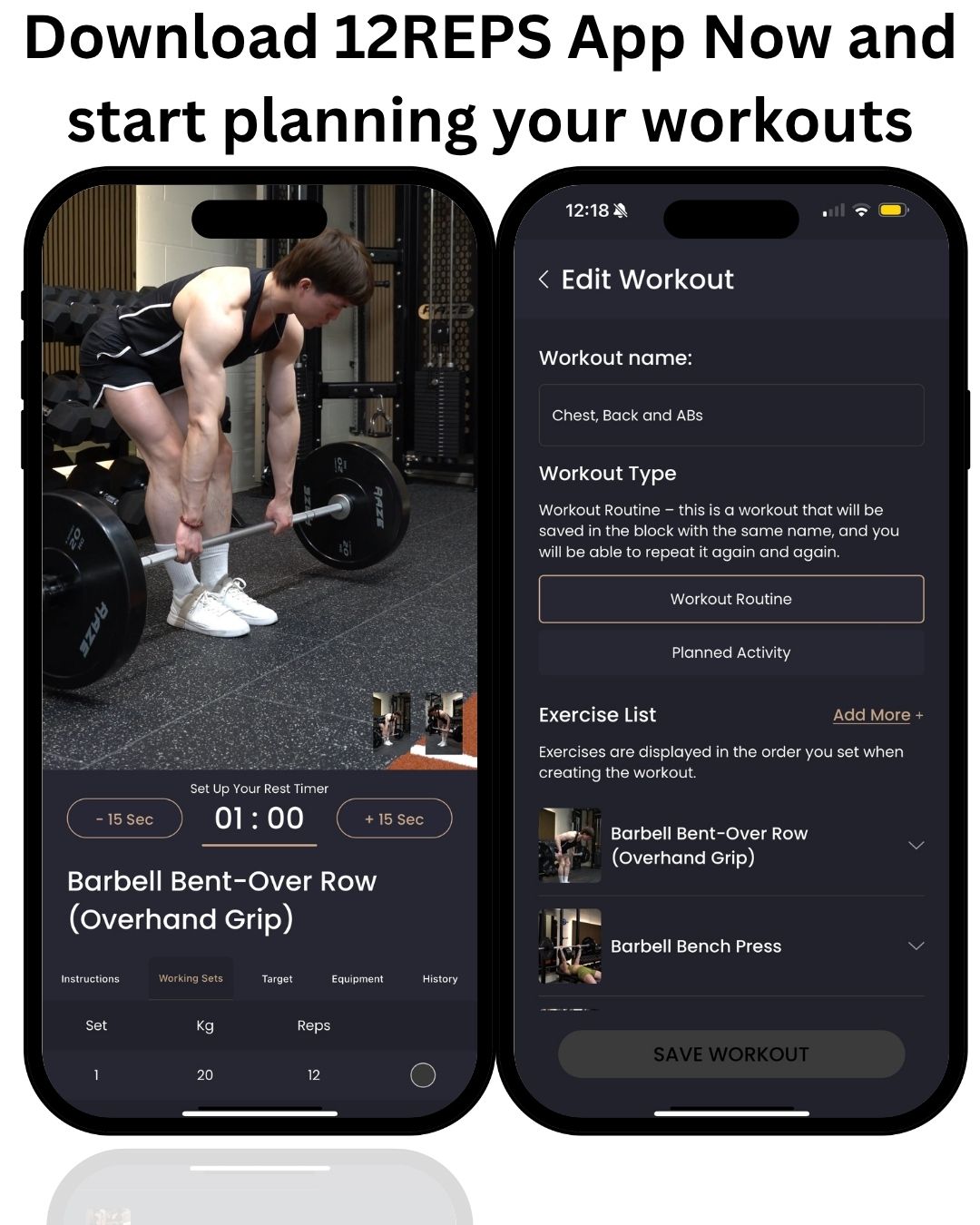By Will Duru, BSc (Hons) Sport and Exercise Science, Award-winning Personal Trainer with over 10 years of experience in strength training and optimising recovery
I often hear the myth that muscle building significantly declines after 40. I’m here to tell you this is simply not true. While our bodies change with age, building and maintaining muscle mass after 40 is not only possible but essential for a vibrant, healthy, and independent life.
This article will break down the science behind muscle growth in mature adults, share evidence-based strategies for optimising training and nutrition, and provide practical insights from my years in the gym. My goal is to empower you with the knowledge and tools to embrace strength training as a cornerstone of healthy ageing. This isn’t just about aesthetics; it’s about feeling great, moving better, and living life on your terms.

The Science of Muscle Building After 40
Understanding how our bodies change with age is crucial for effective muscle building. It’s about working with your body, leveraging scientific principles to maximise results.
Muscle protein synthesis (MPS) is how our bodies build new muscle. As we age, this process can become less efficient, a phenomenon called ‘anabolic resistance.’ This means older muscles may need a stronger stimulus, more protein or more intense exercise to kickstart MPS compared to younger muscles. However, studies consistently show that mature adults can still significantly increase MPS in response to resistance exercise and adequate protein intake [1].
Hormones play a significant role in muscle growth. While anabolic hormones like testosterone and growth hormone may naturally decline with age, this doesn’t stop your ability to build muscle. Strength training itself can positively influence these hormonal responses, and your body remains responsive to the right stimuli [2].
Sarcopenia is the age-related loss of muscle mass, strength, and function. It typically begins in our 30s and accelerates after 60, but it’s largely preventable and even reversible. Consistent, progressive resistance training and proper nutrition are key. I’ve seen clients in their 70s and 80s make remarkable gains, proving it’s never too late to start [3].
Decades of research confirm that significant muscle growth is possible after 40. Numerous studies show that older adults, even those well into their 90s, can achieve substantial increases in muscle mass and strength through structured resistance training. While the rate of gain might be slower, the potential for improvement is undeniable and highly significant for quality of life [4].

Optimal Training Variables for Muscle Growth After 40
Strategic training is crucial. Understanding and manipulating key variables drives results.
Volume refers to the total work done in a workout. For mature adults, moderate to high volumes are effective for muscle growth, typically 2-4 sets per exercise to near muscular failure. Consistency and progressive overload are most important. Start with a volume you can recover from and gradually increase it [5].
Intensity is how heavy you lift. For muscle growth (hypertrophy), 6-15 repetitions per set with challenging weights is effective. Choose a weight where the last few reps are difficult. Don’t shy away from heavier weights; this is where significant gains are made. ‘Heavy’ is relative to your current strength.
Training each major muscle group 2-3 times per week is often ideal for mature adults. This provides sufficient stimulus and allows for adequate recovery. Recovery is paramount as we age; listen to your body, prioritise rest days, and avoid overtraining [7].
Focus on compound movements that work multiple muscle groups simultaneously, such as squats, deadlifts (or RDLs), lunges, rows, and presses. These movements recruit large muscle mass, leading to a greater anabolic response. Ensure a balance between pushing/pulling and upper/lower body exercises for a well-rounded physique.

Nutrition Strategies for Muscle Building After 40
What you eat is as important as how you train, especially as we age.
Protein is the building block of muscle. Mature adults need higher protein intake due to anabolic resistance, generally 1.6 to 2.2 grams per kilogram of body weight per day. Distribute this intake throughout the day, aiming for 25-40 grams of high-quality protein at each main meal and a protein snack before bed.
Leucine is a crucial amino acid that triggers muscle protein synthesis. Foods rich in leucine include dairy, meat, poultry, and fish. Adequate leucine intake, especially around workouts, can help overcome anabolic resistance. Focus on whole food protein sources for a full spectrum of amino acids [10].
To build muscle, aim for a slight caloric surplus (250-500 calories above maintenance) using nutrient-dense foods. This provides the energy and raw materials for muscle repair and growth. Avoid under-eating, which hinders growth, or over-eating, which leads to excessive fat gain.
Micronutrients like Vitamin D, magnesium, zinc, and B vitamins play vital roles in muscle synthesis, energy production, and overall health. Ensure a diet rich in fruits, vegetables, and whole grains. Targeted supplementation can be beneficial, but a balanced diet comes first
Recovery and Lifestyle Factors
What you do outside the gym is equally important for muscle repair and growth.
Sleep is crucial for muscle growth and recovery. During deep sleep, growth hormone is released, vital for tissue repair. Insufficient sleep can increase cortisol and impair recovery. Aim for 7-9 hours of quality sleep per night for optimal results .
Chronic stress elevates cortisol, which can lead to muscle breakdown and impaired recovery. Incorporate stress management techniques like meditation or deep breathing. Managing other life stressors is crucial, as training itself is a stressor .
Proper hydration is essential for nutrient transport, metabolic processes, and cellular volume, all critical for muscle protein synthesis. Even slight dehydration impairs performance and recovery. Aim for at least 2-3 liters of water per day, more if active or in hot environments.
While not a substitute for diet and training, some supplements can help. Creatine monohydrate is effective for increasing strength and muscle mass. Protein powder helps meet daily protein targets. Vitamin D and Omega-3 fatty acids are also often recommended. Always consult a healthcare professional before starting supplements.

12-Week Strength Training Program for Mature Adults
This 12-week program is designed to progressively build your strength, confidence, and muscle mass, taking into account the unique needs of mature adults. Each phase incorporates supersets, combining a weighted exercise with a bodyweight exercise to maximise efficiency and muscle activation. For detailed exercise demonstrations and personalised guidance, and to easily log your exercises, track your weight, reps, and sets, and customise your workouts based on the equipment you have, the body part you want to train, and even your mood, I highly recommend downloading the 12reps app
Focus: Mastering fundamental movements, building stability, and establishing a consistent routine. Introducing the concept of supersets with bodyweight exercises. Frequency: 3 times per week, with at least one day of rest in between.
Superset | Exercise 1 (Sets x Reps) | Exercise 2 (Sets x Reps) | Rest Period (seconds) |
Superset 1 | Bodyweight Squats (3 x 10-15) | Plank (3 x Hold 30-60s) | 60-90 |
Superset 2 | Push-ups (on knees or incline) (3 x 8-12) | Bird-Dog (per side) (3 x 10-12) | 60-90 |
Superset 3 | Glute Bridges (3 x 12-15) | Wall Sit (3 x Hold 30-60s) | 60-90 |
Accessory | Reverse Lunges (per leg) (3 x 8-12) | Calf Raises (3 x 15-20) | 45 |

Focus: Increasing intensity by introducing light free weights and combining exercises into supersets. Progressive overload on bodyweight movements. Frequency: 3 times per week, with at least one day of rest in between.
Superset | Exercise 1 (Sets x Reps) | Exercise 2 (Sets x Reps) | Rest Period (seconds) |
Superset 1 | Goblet Squats (3 x 10-12) | Push-ups (standard or incline) (3 x Max Reps) | 60-90 |
Superset 2 | Dumbbell Rows (3 x 8-12 per arm) | Plank (3 x Hold 45-75s) | 60-90 |
Superset 3 | Dumbbell Romanian Deadlifts (3 x 10-12) | Glute Bridges (3 x 15-20) | 60-90 |
Accessory | Overhead Press (Dumbbell) (3 x 8-12) | Bodyweight Lunges (3 x 10-15 per leg) | 45 |

Focus: Building significant strength and endurance through increased volume and heavier weights. Maintaining superset structure. Frequency: 3-4 times per week, with at least one day of rest in between.
Superset | Exercise 1 (Sets x Reps) | Exercise 2 (Sets x Reps) | Rest Period (seconds) |
Superset 1 | Kettlebell Goblet Squats (4 x 8-10) | Jump Squats (Bodyweight) (4 x 10-12) | 90-120 |
Superset 2 | Dumbbell Bench Press (4 x 8-10) | Inverted Rows (Bodyweight) (4 x Max Reps) | 90-120 |
Superset 3 | Kettlebell Swings (4 x 15-20) | Mountain Climbers (4 x 30-45s) | 90-120 |
Accessory | Bicep Curls (Dumbbell) (3 x 10-12) | Tricep Dips (Bodyweight) (3 x Max Reps) | 60 |

Weeks 10-12: Advanced Progressive Overload
Focus: Maximising strength and muscle growth through heavier loads, increased volume, and challenging superset combinations. Continued emphasis on progressive overload. Frequency: 3-4 times per week, with at least one day of rest in between.
Superset | Exercise 1 (Sets x Reps) | Exercise 2 (Sets x Reps) | Rest Period (seconds) |
Superset 1 | Dumbbell Deadlifts (4-5 x 6-8) | Box Jumps (Bodyweight) (4-5 x 6-8) | 120-180 |
Superset 2 | Dumbbell Floor Press (4-5 x 8-10) | Pull-ups (Assisted or Banded) (4-5 x Max Reps) | 120-180 |
Superset 3 | Kettlebell Front Squats (4-5 x 8-10) | Pistol Squat Progression (Bodyweight) (4-5 x 5-8 per leg) | 120-180 |
Accessory | Lateral Raises (Dumbbell) (3 x 12-15) | Plank with Shoulder Taps (3 x 10-12 per side) | 60 |
Remember to always prioritise proper form over lifting heavy. As you get stronger, gradually increase the weight, reps, or sets to continue challenging your muscles. Consistency is key! For more personalised programs and to track your progress, download the 12reps app at just12reps.com.
Empowerment Through Strength
The journey of building muscle mass after 40 is not just about physical transformation; it’s about reclaiming your vitality, enhancing your quality of life, and embracing a powerful, resilient version of yourself. The science is unequivocally on your side: age is not a barrier to significant muscle growth. While the approach may need to be strategic, focusing on progressive overload, adequate protein intake, sufficient recovery, and a holistic lifestyle, the rewards are immense.
As your personal trainer, I’ve witnessed firsthand the profound impact that consistent strength training has on mature adults, from increased energy and improved body composition to enhanced mental well-being and a renewed sense of confidence. It’s about building a body that supports your life, allowing you to pursue your passions, enjoy your family, and navigate the challenges of aging with strength and grace.
So, challenge the myths, embrace the science, and commit to the process. Your strongest years are still ahead of you. Download the 12reps app at just12reps.com to start your personalised strength journey today.

References
American Heart Association. (2024, December 18). The changing nutritional needs of older adults and how to meet them. Retrieved from https://www.heart.org/en/news/2024/12/18/the-changing-nutritional-needs-of-older-adults-and-how-to-meet-them
Frontiers in Nutrition. (2021, January 25). Where to Find Leucine in Food and How to Feed Elderly. Retrieved from https://www.frontiersin.org/journals/nutrition/articles/10.3389/fnut.2020.622391/full
Fitness Nation. (n.d.). Beyond the Scale: 5 Ways to Measure Fitness Progress. Retrieved from https://fitness-nation.net/beyond-the-scale-5-ways-to-measure-fitness-progress/
Harvard Health. (2016, February 19). Preserve your muscle mass. Retrieved from https://www.health.harvard.edu/staying-healthy/preserve-your-muscle-mass
Harvard Health. (2021, March 1). Resistance training by the numbers. Retrieved from https://www.health.harvard.edu/staying-healthy/resistance-training-by-the-numbers
KeyNutrients. (2023, June 15). Does Hydration Help Muscle Growth. Retrieved from https://keynutrients.com/blogs/learn/muscle-up-with-h2o-a-deep-dive-into-the-role-of-hydration-in-muscle-growth
National Institute on Aging. (2022, June 30). How can strength training build healthier bodies as we age?. Retrieved from https://www.nia.nih.gov/news/how-can-strength-training-build-healthier-bodies-we-age









